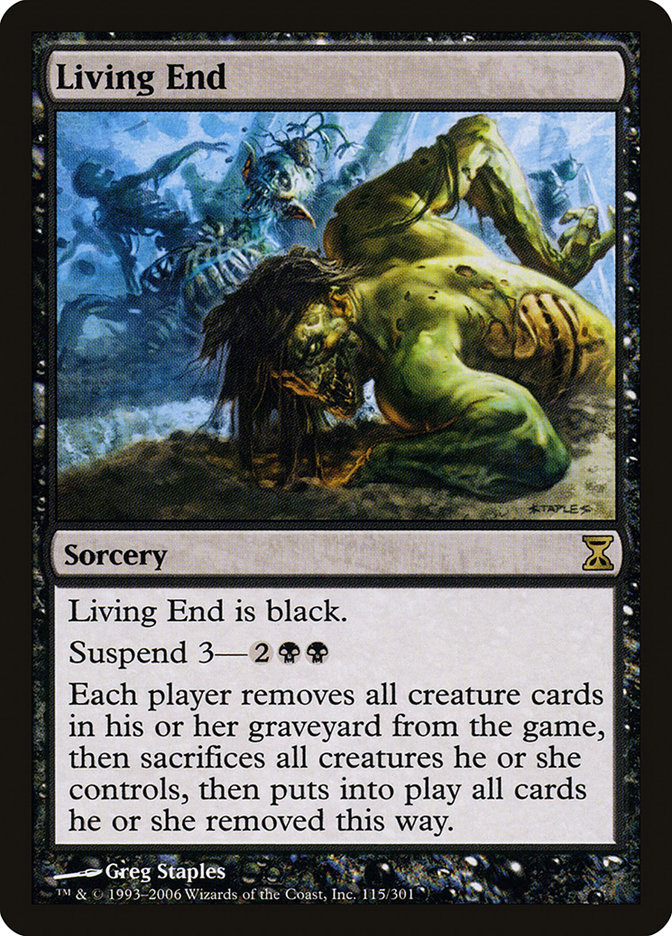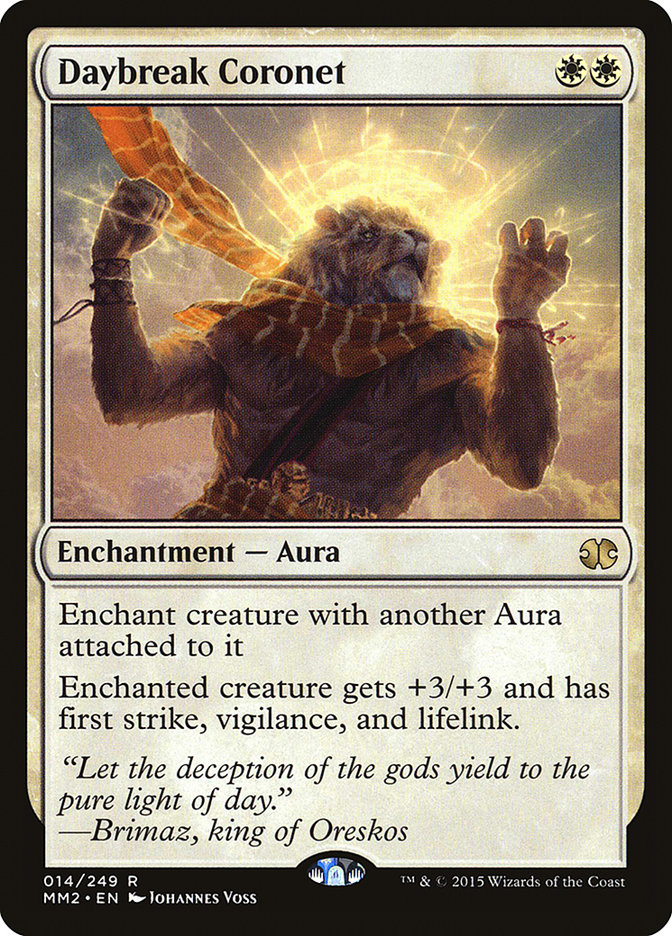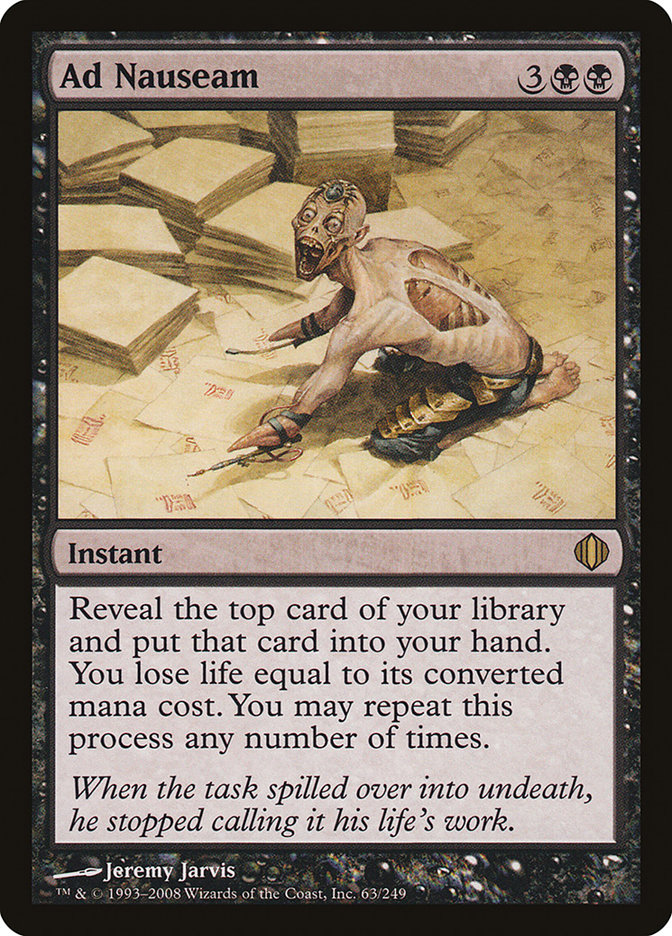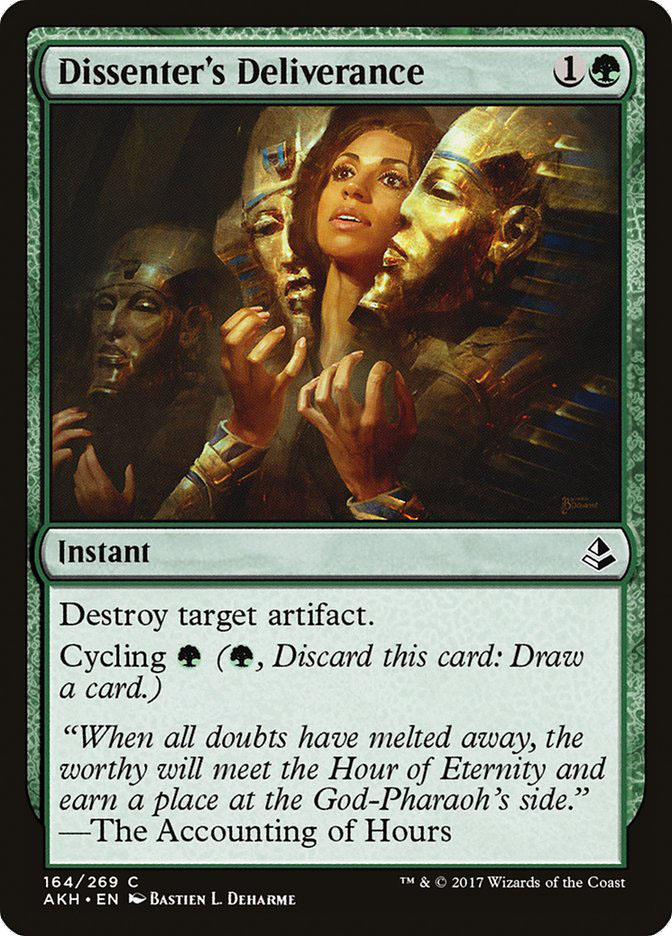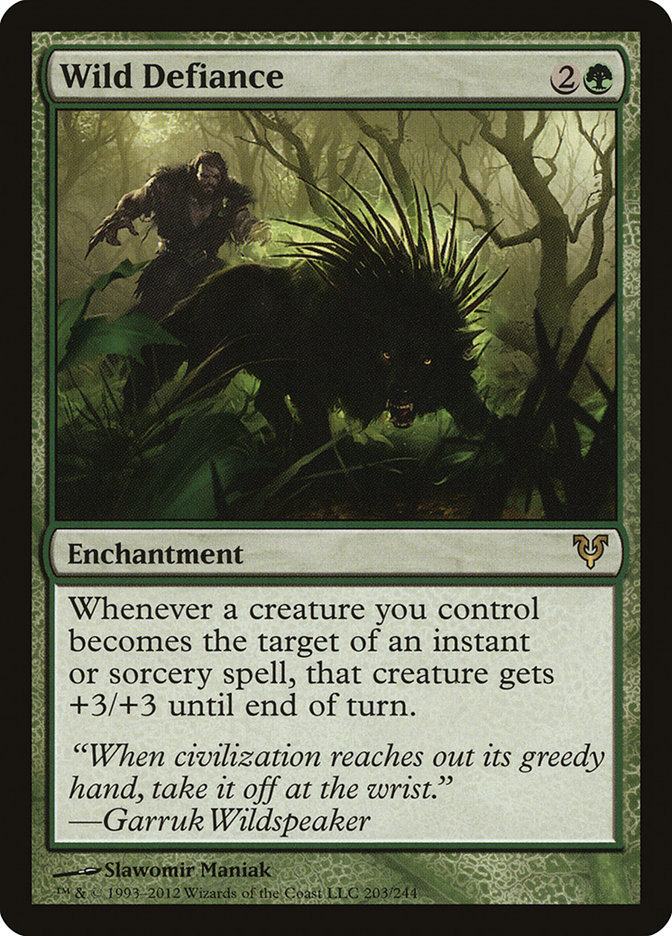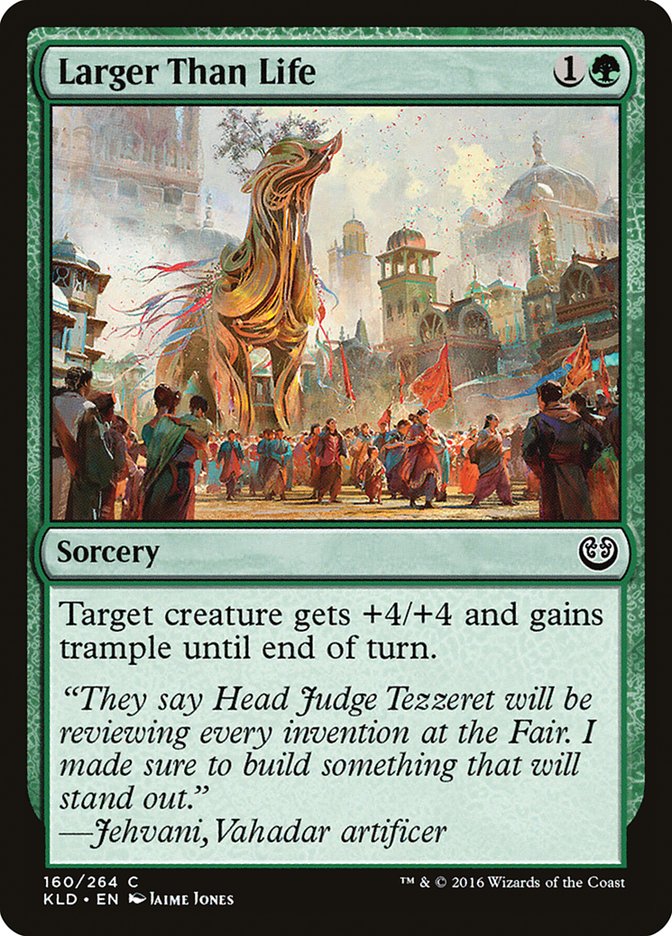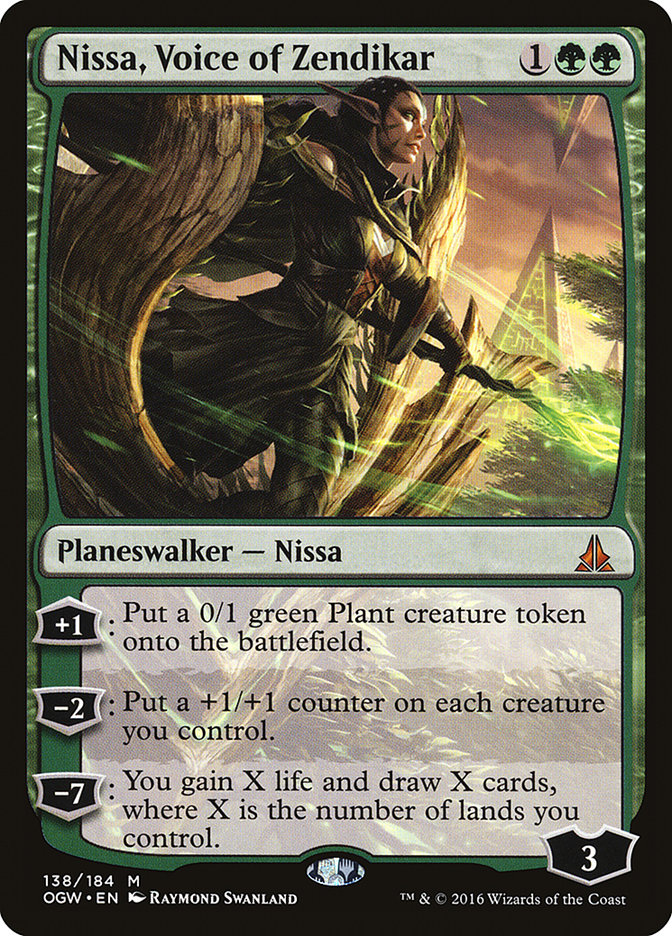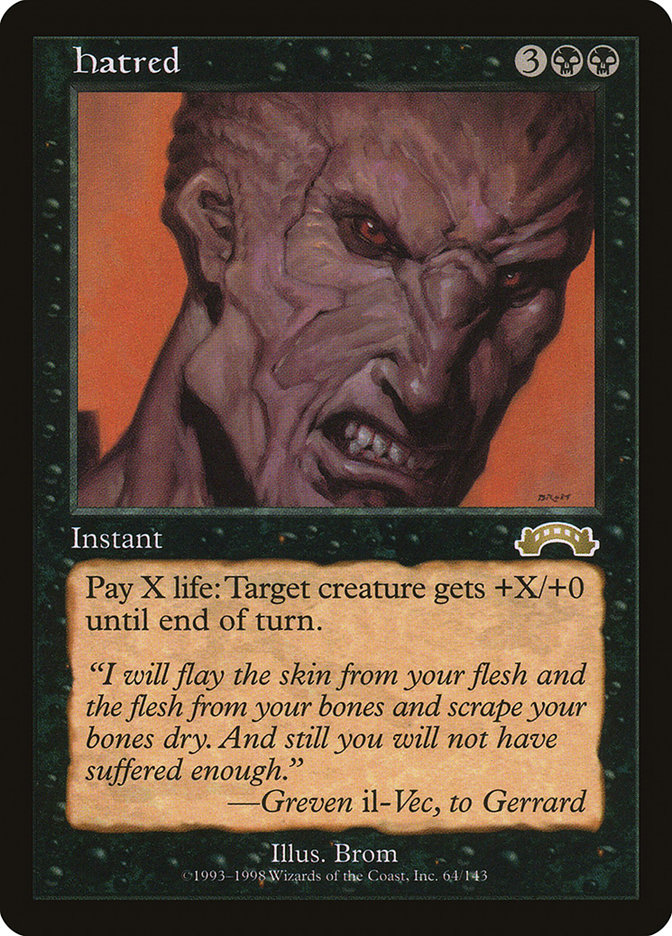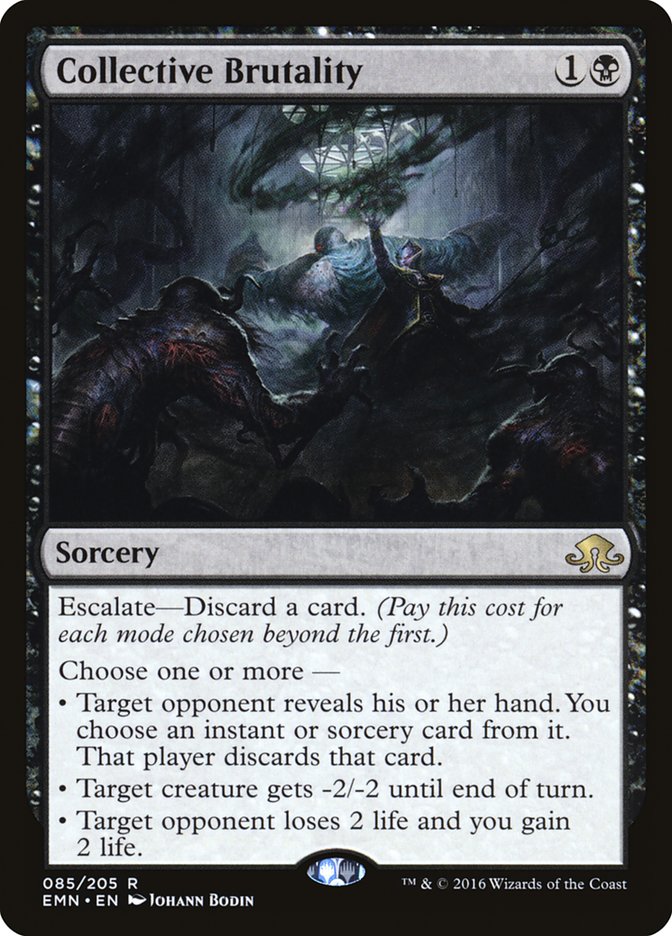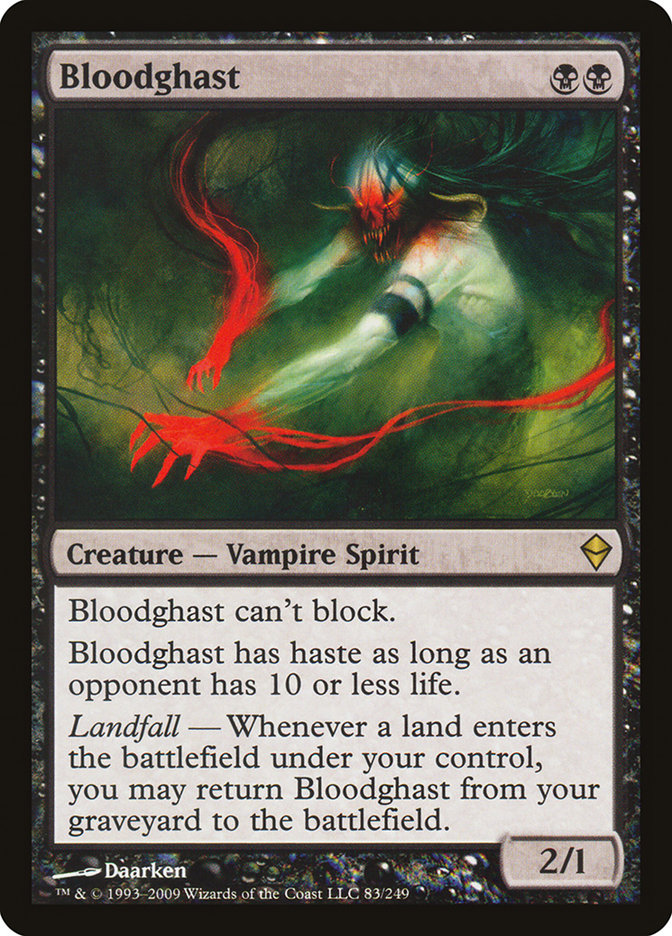Playing the consensus best deck will not win you a Modern tournament.
As you probably know, I have my own style of deck choice. I rarely play the “best deck,” instead choosing a deck I think can beat the best deck(s) while also having a chance against the field. Sometimes I go a level beyond, putting myself on Level 3 and trying to beat the decks that beat the format’s best deck(s).
“To win at Modern, you want to do the most degenerate thing people aren’t prepared for.”
— Me, sometime in 2016
Modern is a healthy format full of viable decks that can win if their matchup pairings shake out right. If you know your deck well and have a researched understanding of what your opponents have in store for you, then you have a substantial edge on the field. Modern is a format where you can play what you want and have reasonable success.
Modern, just like any Magic format, is also a format where winning decks will surface to the top and will continue to success until the metagame readjusts. It was Jund Death’s Shadow before Grixis Death’s Shadow proved to be the trump in the matchup while also having game against the field. After Brad Nelson’s Open win with Grixis Death’s Shadow in Baltimore this year, it became clear what the deck to beat was. Todd Stevens followed that up in June with a win in Charlotte with Eldrazi Tron, silencing the non-believers of the archetype with a deck built to be advantaged against the Death’s Shadow decks.
Creatures (7)
Lands (14)
Spells (39)
- 1 Mountain
- 3 Island
- 4 Sleight of Hand
- 4 Serum Visions
- 1 Peer Through Depths
- 4 Gifts Ungiven
- 4 Desperate Ritual
- 4 Remand
- 3 Grapeshot
- 4 Manamorphose
- 4 Pyretic Ritual
- 1 Apostle's Blessing
- 2 Past in Flames
Sideboard

Kazu Negri won with U/R Gifts Storm last weekend in Richmond. Other decks trending upwards in popularity are G/W Collected Company and TitanShift. The expected (and resulting) Richmond metagame also had the usual numbers of Burn, Grixis Death’s Shadow, and Affinity.
I chose to play Infect at Richmond, despite a poor Grixis Death’s Shadow, Eldrazi Tron, and Burn matchup. Why?
Because I could win the tournament.
I didn’t sign up for a Top 16. I didn’t sign up to lose in the Top 8.
Day 2 didn’t go well for me in Richmond, as I fell into a downward spiral once I hit the losing bracket. Burn, Death’s Shadow, and Abzan were decks I thought wouldn’t be prevalent at the top tables but felled me in my Day 2 pairings. For dropping at 7-6, I still felt just short of winning the tournament. The same situation happened when Todd Anderson and I played the same-75 Infect deck in Cincinnati a couple of years ago. I dropped after six losses after being in medium-bracket hell, while Todd went on to win the tournament.
The flip side of my situation was when I played G/W Tron in Columbus last year, where I could’ve easily lost early on and faced a bunch of bad matchups like Burn and Infect but instead was able to stay above water on the top tables and played all favorable matchups like Jund, Dredge, and Kiki Chord that I expected to be at the top tables.
Creatures (13)
Lands (18)
Spells (29)

With Dan Musser’s win in Syracuse the previous weekend, I wanted to be prepared to compete with Eldrazi Tron. Chalice of the Void and Walking Ballista were huge problems that maindeck Dissenter’s Deliverance helps to ease. Aaron Barich, a fellow Southerner who finished in the Top 16 of this year’s Season One Invitational with Infect, suggested Dissenter’s Deliverance and Spellskite as maindeck-worthy cards and I took his advice. I was impressed with Spellskite, as the format has all but forgotten about the card, and Dissenter’s Deliverance never really held me back when it didn’t have a target but did sometimes fuel delve for Become Immense.
Wild Defiance was pretty good too. It’s basically your only chance to win against Jeskai Control and is very good against Burn. After sideboarding, nearly every deck loads up on removal for your creatures. Their plan is to strand you with pump spells in hand. Your plan should be to be able to win from a lower base and with a lot of protection. Wild Defiance goes nicely with otherwise efficient pump spells like Blossoming Defense and Vines of Vastwood.
Larger Than Life was a card choice that I made because I wanted another evasion spell that’s powerful on its own against decks like TitanShift. Apostle’s Blessing is bad against Eldrazi Tron and I wanted to avoid it. There are only so many blue spells you’re allowed to play, so cards like Distortion Strike or Slip Through Space should be used sparingly, especially when I wanted Spell Pierce to combat Chalice of the Void early.
Nissa, Voice of Zendikar was tight against Grixis Death’s Shadow to generate blockers as well as a threat that came from a different axis against control decks like Jeskai. The -2 was relevant to pressure while not investing mana. You typically want to go low on pump spells in many post-sideboard matchups anyway.
Tezzeret’s Gambit has been a pet card of mine that I really think has strong potential in Infect builds moving forward. So what does Tezzeret’s Gambit actually do?
1. Ticks up an opposing Chalice of the Void to two, freeing up your one-drops.
2. Potentially messes with Aether Vial.
3. Works great with Nissa, Voice of Zendikar, both with +1/+1 counters and ticking up Nissa herself.
4. Ups the -1/-1 counters on creatures dealt damage by Glistener Elf.
5. Generates card advantage against grindy decks, an aspect that Infect is sorely lacking.
6. Last, but not least, kills players at nine poison.
Tezzeret’s Gambit does a ton of things and I’ve been impressed with it nearly every time I’ve drawn it, which makes me question if more should be added, possibly even in the maindeck. I can envision an Infect build that is prepared for their fragile creatures to die early and for discard spells to rip them apart. There, drawing a couple of cards can go a long way, especially when not under much pressure. A take on Infect that isn’t as all-in on trying to win turn 3 through traditional pump spells while still maintaining enough power to outrace decks like Ad Nauseam and TitanShift might be the ticket to Infect’s resurgence.
Creatures (17)
Lands (19)
Spells (24)

This build of Infect has a backdoor kill with two Spellskite and a Wild Defiance generating a Hatred-esque win condition. Wild Defiance triggers on each transfer of a spell between the Spellskites, generating +3 power for each two life paid.
This lets you run fewer dedicated pump spells like Might of Old Krosa or Groundswell in lieu of more protection spells, evasion spells, and interactive spells like Twisted Image.
With how much I’ve felt like Spellskite and Wild Defiance have been overperforming for me, I don’t mind jamming a bunch of them in my maindeck when it also enables an alternative win condition.
Going for the Trophy With B/W Smallpox in Syracuse
Creatures (4)
Planeswalkers (8)
Lands (23)
Spells (25)

I made a calculated decision to play B/W Smallpox at the Modern Open in Syracuse two weekends ago.
Its matchup is good against Grixis Death’s Shadow and great against Burn. It’s good against anything midrange like traditional Jund, Abzan, or Jeskai. It’s weak against Eldrazi Tron, TitanShift, or anything heavily graveyard-based like Dredge. Those decks are exactly what I lost to.
B/W Smallpox isn’t a high-tier deck, but is one that I felt could win if things broke in my favor. Finding the rare Dredge opponent and playing against multiple Eldrazi Tron decks resulted in failure. Perhaps I didn’t compensate enough for the Eldrazi Tron matchup, but in reality Modern is about choosing the deck that is doing things that the opponent isn’t prepared for. B/W Smallpox does plenty of those things, and even though Eldrazi Tron is a poor matchup and would take extreme skewing of the list to make the matchup positive, I was happy jamming it, knowing that I would be unfavored in a matchup or two along the way. If I dodged them, then who knows what could’ve been.
The maindeck Collective Brutalities felt like overkill in already good matchups like Burn. The one-of Mana Tithe was tight, and good for when the opponent isn’t expecting it, but I’d avoid it for now. The sideboard Kalitas, Traitor of Ghets were amazing and would even consider playing them maindeck. The ability to sacrifice a Bloodghast or a Sorin, Solemn Visitor was amazing all weekend.
The Importance of Big Topdecks
Grixis Death’s Shadow has been the deck to beat for nearly six months now. It’s heavy on discard spells and leverages the resource denial and hand knowledge to sequence its spells.
What Grixis Death’s Shadow doesn’t do well against is playing against the top of your deck.
Creatures (18)
Planeswalkers (2)
Lands (24)
Spells (16)

We’ve seen Eldrazi Tron achieved Tier 1 status and take down multiple tournaments in part due to its favorable Grixis Death’s Shadow matchup. But why is it favorable? Sure, Chalice of the Void can shut down a chunk of the Death’s Shadow deck and there are nutty draws with multiple Eldrazi Temples. A big appeal to Eldrazi Tron is its really powerful topdecks. It could be the third Tron piece to enable big plays. It could be an Endbringer, Reality Smasher, or Karn Liberated. Whatever the case, Eldrazi Tron is setup to rip extremely game-swinging cards off the top that leave the Thoughtseize player facepalming at their unfortunate luck, In fact, that’s just good deckbuilding from the Eldrazi Tron side.
Creatures (8)
Planeswalkers (1)
Lands (18)
Spells (33)

TitanShift falls into this camp and has been seeing success for similar reasons. Infect’s big topdecks like Become Immense was one reason I sleeved it up for Richmond. U/R Storm can go off with their missing piece from a single draw, making it difficult to play against. A topdecked Cranial Plating from Affinity or the final three points of damage from Burn has spelled the end to games of Modern for years, and will do so for years to come.
To succeed in Modern now, you want to have very impactful cards that you can draw off the top in the mid- to late-game. After sideboarding, you want to load up on more, as long as Thoughtseize and Thought-Knot Seer are winning tournaments.
Good luck.


